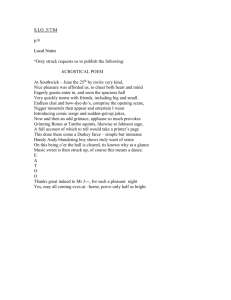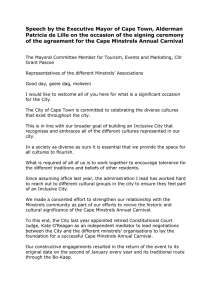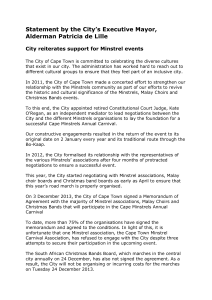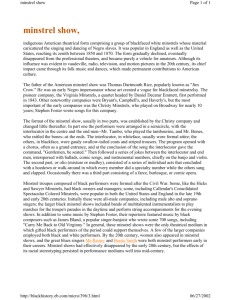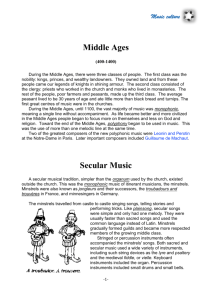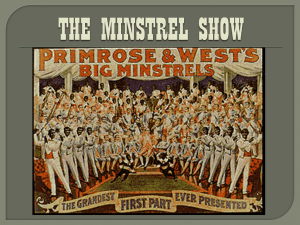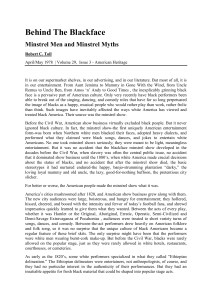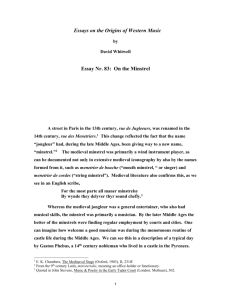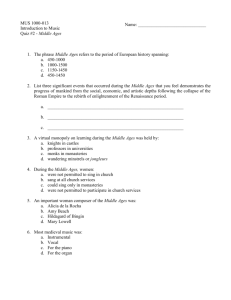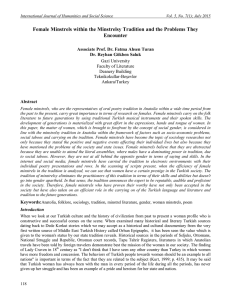Troubadours and Minstrels
advertisement
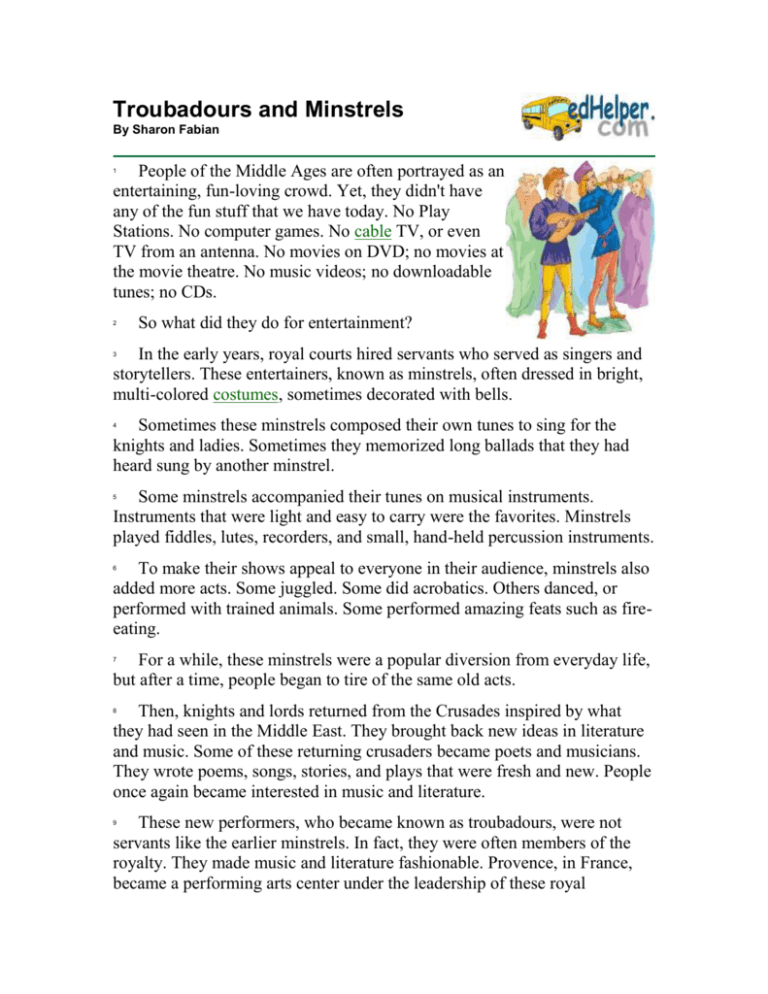
Troubadours and Minstrels By Sharon Fabian People of the Middle Ages are often portrayed as an entertaining, fun-loving crowd. Yet, they didn't have any of the fun stuff that we have today. No Play Stations. No computer games. No cable TV, or even TV from an antenna. No movies on DVD; no movies at the movie theatre. No music videos; no downloadable tunes; no CDs. 1 2 So what did they do for entertainment? In the early years, royal courts hired servants who served as singers and storytellers. These entertainers, known as minstrels, often dressed in bright, multi-colored costumes, sometimes decorated with bells. 3 Sometimes these minstrels composed their own tunes to sing for the knights and ladies. Sometimes they memorized long ballads that they had heard sung by another minstrel. 4 Some minstrels accompanied their tunes on musical instruments. Instruments that were light and easy to carry were the favorites. Minstrels played fiddles, lutes, recorders, and small, hand-held percussion instruments. 5 To make their shows appeal to everyone in their audience, minstrels also added more acts. Some juggled. Some did acrobatics. Others danced, or performed with trained animals. Some performed amazing feats such as fireeating. 6 For a while, these minstrels were a popular diversion from everyday life, but after a time, people began to tire of the same old acts. 7 Then, knights and lords returned from the Crusades inspired by what they had seen in the Middle East. They brought back new ideas in literature and music. Some of these returning crusaders became poets and musicians. They wrote poems, songs, stories, and plays that were fresh and new. People once again became interested in music and literature. 8 These new performers, who became known as troubadours, were not servants like the earlier minstrels. In fact, they were often members of the royalty. They made music and literature fashionable. Provence, in France, became a performing arts center under the leadership of these royal 9 entertainers. Eleanor of Aquitaine had been a patron of the arts, and her son, King Richard the Lionheart, was himself a troubadour as well as a king. 10 These new entertainers added another popular feature to their performances. They told the latest news. Since they had traveled widely, they had news to tell that people of the Middle Ages were anxious to hear. They told about battles won or lost. They told about far away places. 11 By the late Middle Ages, there were storytellers, poets, and musicians in all social classes. Many of them were both popular and well paid as they traveled all over the country looking for the next place to perform. The best of them were treated like royalty wherever they went. They performed at royal courts and castles. They also performed at fairs and country festivals. They performed for weddings, holidays, and other celebrations. Since medieval people had lots of celebrations, there was plenty of work for a good minstrel or troubadour. 12 People of the late Middle Ages never had to look far to find a singer of love ballads, or a poet telling of heroic battles. They listened to a wide variety of musical instruments including lutes, fiddles, bagpipes, hurdygurdies, and dulcimers. They were entertained by jugglers, acrobats, and even dancing bears. 13 Medieval people didn't have to watch their entertainment on a computer screen, a little TV screen, or even a big screen. They were treated to all of their entertainment live. No wonder they were never bored. 14 Copyright © 2010 edHelper
